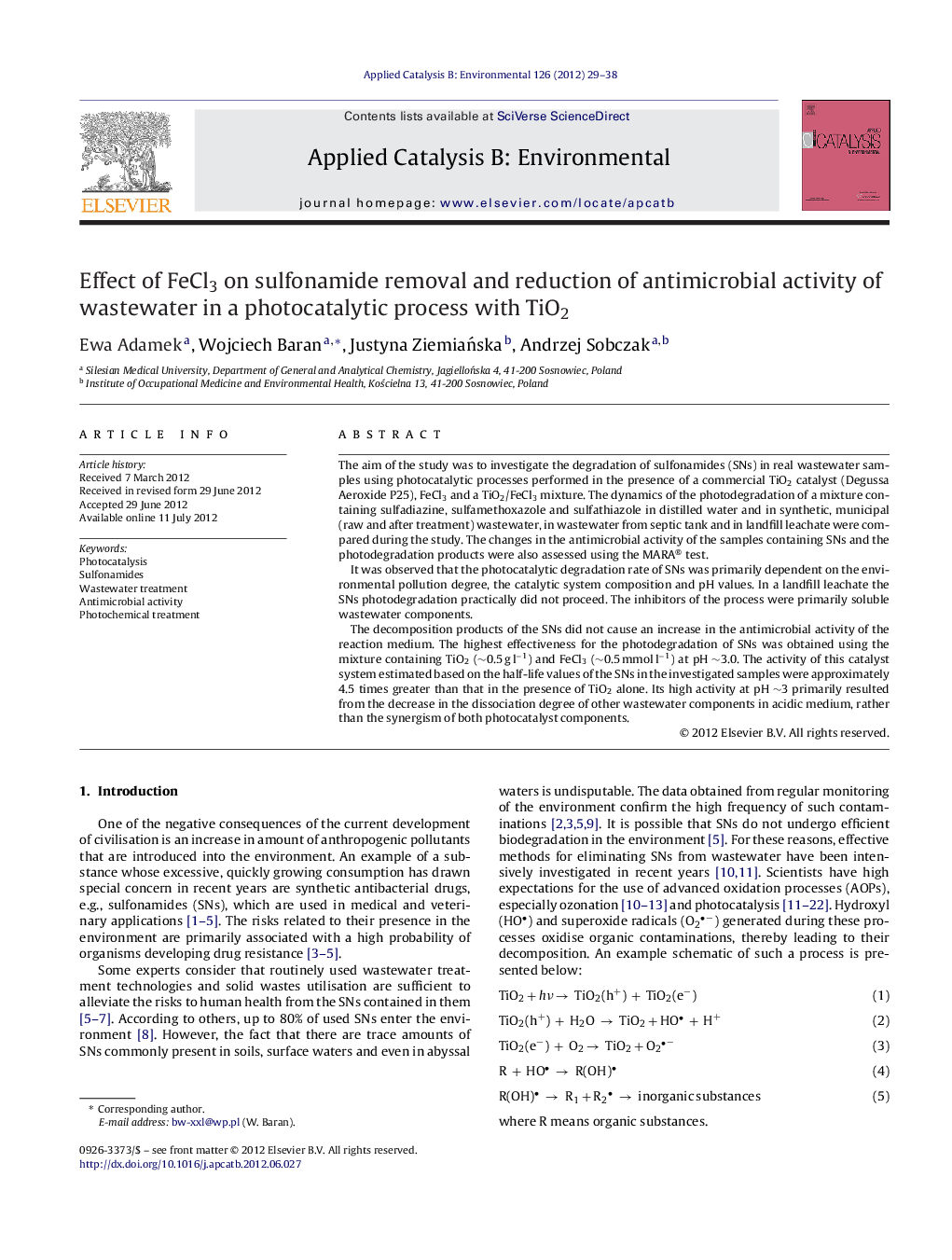| کد مقاله | کد نشریه | سال انتشار | مقاله انگلیسی | نسخه تمام متن |
|---|---|---|---|---|
| 46526 | 46441 | 2012 | 10 صفحه PDF | دانلود رایگان |

The aim of the study was to investigate the degradation of sulfonamides (SNs) in real wastewater samples using photocatalytic processes performed in the presence of a commercial TiO2 catalyst (Degussa Aeroxide P25), FeCl3 and a TiO2/FeCl3 mixture. The dynamics of the photodegradation of a mixture containing sulfadiazine, sulfamethoxazole and sulfathiazole in distilled water and in synthetic, municipal (raw and after treatment) wastewater, in wastewater from septic tank and in landfill leachate were compared during the study. The changes in the antimicrobial activity of the samples containing SNs and the photodegradation products were also assessed using the MARA® test.It was observed that the photocatalytic degradation rate of SNs was primarily dependent on the environmental pollution degree, the catalytic system composition and pH values. In a landfill leachate the SNs photodegradation practically did not proceed. The inhibitors of the process were primarily soluble wastewater components.The decomposition products of the SNs did not cause an increase in the antimicrobial activity of the reaction medium. The highest effectiveness for the photodegradation of SNs was obtained using the mixture containing TiO2 (∼0.5 g l−1) and FeCl3 (∼0.5 mmol l−1) at pH ∼3.0. The activity of this catalyst system estimated based on the half-life values of the SNs in the investigated samples were approximately 4.5 times greater than that in the presence of TiO2 alone. Its high activity at pH ∼3 primarily resulted from the decrease in the dissociation degree of other wastewater components in acidic medium, rather than the synergism of both photocatalyst components.
Figure optionsDownload as PowerPoint slideHighlights▸ The most active catalyst for photodegradation of sulfa drugs in sewage was a mixture of TiO2/FeCl3. ▸ The optimum pH for this process was ≤3. ▸ Excess of FeCl3 (>1.0 mmol l−1) was an inhibitor of the process. ▸ Products of sulfonamides photodegradation did not cause an increase in microbial activity. ▸ Ionic contaminants in sewage probably acted as an inhibitor of photodegradation of sulfonamides.
Journal: Applied Catalysis B: Environmental - Volume 126, 25 September 2012, Pages 29–38